#12 jyotirlingas name
Explore tagged Tumblr posts
Text
Exploring the Divine: Unveiling the Mystical 12 Jyotirlingas of India | Happy Travel Tips
The 12 Jyotirlingas are a sacred set of twelve sanctuaries devoted to Lord Shiva, one of the top divinities in Hinduism. Jyotirlinga translates to” the radiant sign of the Almighty.” These sanctuaries are considered largely significant passage destinations for addicts of Lord Shiva. Each Jyotirlinga is believed to be an incarnation of Lord Shiva himself, and visiting all twelve Jyotirlingas is considered to be veritably auspicious in Hindu tradition. The locales of these Jyotirlingas are spread across different corridors of India.
Click here- https://happytraveltips.in/12-jyotirlingas-in-india/
#12 jyotirlingas in India#12 jyotirlingas name#12 jyotirlinga list#12 Jyotirlinga name and place#Somnath temple#Nageshwar Jyotirlinga#bhimashankar temple#trimbakeshwar temple#Grishneshwar temple#Mahakaleshwar Ujjain
1 note
·
View note
Text
0 notes
Text


Shiva-Linga 'Cosmic Fire' by Talon Abraxas
Shiva Purana is related to Shaivism. This Purana has 6 sections and 24000 verses. In this Purana, a comprehensive description of Lord Shiva’s various forms, incarnations, Jyotirlingas, devotees, and devotion has been said. In the Shiv Purana, a detailed description of the welfare, mystery, glory, and worship of Lord Mahadev of the gods has been described in detail.
In the Shiva Purana, apart from the glory and devotion of Lord Shiva, the method of worship, many enlightening narratives and instructive stories have been beautifully described and the grandest personality of Lord Shiva has been glorified. Lord Shiva who is Swayambhu, an Eternal, Supreme Being, Universal Consciousness, and the basis of cosmic existence.
In almost all the Puranas, Lord Shiva has been described as an idol of sacrifice, penance, love, and compassion. Lord Shiva is easily pleased and is the one who gives desired results. But in the Shiva Purana, a special description has been given about the life character of Lord Shiva, his lifestyle, marriage, and the origin of his sons. There are 6 sections in this Purana, which are as follows.
1) Vidyeshwara Samhita 2) Rudra Samhita 3) Kotirudra Samhita 4) Kailas Samhita 5) Air Code 6) Uma Samhita
12 Jyotirlingas in Shiva Purana:- In the Kotirudra Samhita of Shiva Purana, 12 Jyotirlingas of Lord Shiva have been described in detail. This very ancient 12 Jyotirlinga form of Shivling is the abode of Lord Shiva. The worship of 12 Jyotirlingas has a special significance in Sanatan Dharma. Following are the names of these 12 Jyotirlingas.
1) Somnath Jyotirlinga Located in the Saurashtra region of Gujarat, this Jyotirlinga is considered to be the oldest and the first Jyotirlinga of the earth. According to Shiva Purana, Somnath Jyotirlinga has been established by Chandradev himself.
2) Mallikarjuna Jyotirlinga This Jyotirlinga is situated on the banks of river Krishna in the state of Andhra Pradesh, India on a mountain named Srisailam.
3) Mahakaleshwar Jyotirlinga This Jyotirlinga is located in Ujjain city of Madhya Pradesh. This is the only Jyotirlinga facing south. The Bhasmari of Mahakaleshwar Jyotirlinga is famous all over the world.
4) Omkareshwar Jyotirlinga Omkareshwar Jyotirlinga is located in the Malwa region near Indore in Madhya Pradesh. The shape of Om is formed here due to the mountain and river flowing around this Jyotirlinga.
5) Kedarnath Jyotirlinga This Jyotirlinga is located in the Rudraprayag district of Uttarakhand state on the Kedar peak of the Himalayas.
6) Bhimashankar Jyotirling This Jyotirlinga is situated on a mountain called Sahyadri near Pune in Maharashtra.
7) Kashi Vishwanath Jyotirling This Jyotirlinga is located in Varanasi, Uttar Pradesh. This Jyotirlinga is also known as Vishweshwar.
8 ) Trimbakeshwar Jyotirlinga This Jyotirlinga is located in the Nashik district of Maharashtra state. This is a mountain named Brahmagiri near the Jyotirlinga. The Godavari river originates from the Brahmagiri mountain.
9) Vaidyanath Jyotirlinga This Jyotirlinga is located near Santhal Pargana of Jharkhand state. This Vaidyanath Dham of Lord Shiva has been called Chitabhoomi.
10) Nageshwar Jyotirling This Jyotirlinga is located in the Dwarka region of Gujarat.
11) Rameshwaram Jyotirlinga This Jyotirlinga is located in Rameswaram, Tamil Nadu. This Jyotirlinga was made by Lord Shri Ram himself with his own hands.
12) Ghrishneshwar Temple Jyotirlinga This Jyotirlinga is located near Daulatabad in Maharashtra. This is the last Jyotirlinga among the 12 Jyotirlingas of Lord Shiva.
Significance of Shiva Purana:- Shiva Purana has great importance for the devotee of Shiva. In the Shiva Purana, the elemental interpretation, mystery, glory, and worship of the benevolent form of Lord ‘Shiva’ of Parabrahm Parmeshwar have been described. Reading the Shiva Purana and listening to it with devotion is the best form of worship. According to Shiva Purana, a man reaches the highest position after attaining Shiva devotion, he attains Shivapada. By listening to this Purana selflessly and reverently, one becomes free from all sins and enjoys great and excellent pleasures in this life, and finally attains Shivaloka.
27 notes
·
View notes
Text
Sanctum of Lord Shiva: The Sacred Jyotirlingas
India is the land of gods, polytheistic culture, and exuberant people. The country is famous for its unity in diversity, colorful ambiance, and royal heritage. The nation of spirituality—India—is what we are known for. The country witnessed numerous saints who transcended the realm of the physical with faith in their hearts and devotion in their souls. Even in modern times, the faith hasn't vanished yet! On a broader scale, there are three prominent deities worshipped in their various forms: Shiva—the destroyer, Vishnu—the preserver, and Shakti—the mother of the Universe. There are separate shrines to revere each form in their myriad incarnations; the most prominent shrine is of Lord Shiva—the 12 Jyotirlingas. These 12 Jyotirlinga names are based on the manifestation of Shiva in different forms.
Ever wondered what the story behind the Jyotirlingas is?
According to Hindu mythology, Jyotirlinga refers to the “Pillar of Light,” which symbolizes Shiva’s eternal formless nature, and all that is in the universe merges back to the one. Once Lord Vishnu and Lord Brahma had tussled over who the supreme deity was, an infinite pillar of light emerged, which was Lord Shiva himself. There the battle of power ended, and Vishnu and Brahma submitted to Shiva, acknowledging him as supreme of all. The legend of the 12 Jyotirlingas is popular, and it is also considered that those who visit the holy shrines of Lord Shiva attain perpetual bliss and ultimate realization.
Where are the Jyotirlingas located?
After knowing the legend behind the Jyotirlinga, the next step is to locate the places to experience this eternal bliss. Here we are providing your name with place list of 12 Jyotirlingas:
Somnath - Gujarat:
Located in Saurashtra, Gujarat, it is considered one of the first Jyotirlingas, which holds immense importance in Hindu culture. The story is that the God of the Moon, Chandra Dev, was cursed by his father-in-law, Daksha. He was seeking relief when he reached Lord Shiva, who blessed him and freed him partially from the curse. This incident led to the establishment of Somath as Shiva’s most compassionate form.
Mallikarjun—Andhra Pradesh:
This Jyotirlinga is located in Srisailam, Andhra Pradesh, present on the serene banks of the Krishna River, and holds deep spiritual significance in Hinduism. Mention of the Jyotirlinga is found in the Shiva Purana and Skanda Purana. This temple is considered sacred as it is considered that Lord Shiva and Devi Parvati, his consort, resided here, making the shrine one of the unique temples where Shaivism and Shaktism combine.
Omkareshwar—Madhya Pradesh:
Located in the Khandwa district of Madhya Pradesh, Omkareshwar is a name that appears prominently in 12 Jyotirlingas. According to ancient scriptures such as the Skanda Purana, there is a legend famous according to which it is believed that the shrine is located on a mythical island known as Mandhata, which is in the shape of the symbol Om that represents eternal cosmic energy. It is believed that visiting the temple liberates the devotees from any kind of physical ailment and helps in breaking the cycle of birth and death.
Kedarnath - Uttarakhand:
One of the Char Dhams, Kedarnath, located in the enigmatic Himalayas, the Kedarnath Temple is the most sanctified place of spiritual significance in India. According to historical legend, it is believed that the Pandavas, the fighters of the Mahabharata—the greatest war—sought Shiva’s blessings to emancipate from the sins of war. Nestled in the Himalayas is a perfect place to meditate and attain spiritual liberation.Kedarnath, a prominent name in the 12 Jyotirlingas, placed in Uttarakhand, is charged with high spiritual energy.
Kashi Vishwanath—Varanasi:
Located in the timeless city of Varanasi, Kashi Vishvanath is one of the popular places in modern times because of its ancient aesthetics and spiritual significance. It is considered the abode of Vishwanath, or “Lord of the Universe.”. Located in one of the oldest continuously inhabited cities in the world, Kashi, now known as Varanasi, the temple attracts millions of tourists every year, and the gathering of devotees exceeds the capacity on significant days like Mahashivratri.
Trimbakeshwar—Maharashtra:
Situated in Nashik, Maharashtra, the temple is a unique place in itself as it incorporates the unity of three supreme powers of the universe, namely, Brahma, Vishnu, and Mahesh, the holy trinity of Hindu mythology. The temple is also famous because the famous river named Godawari has its source in the temple.
Viadyanath - Bihar/Jharkhand:
Also known as Baijnath, this temple represents Shiva as the divine healer. The devotees believe that worshipping in the temple sets them free from sins, and Shiva grants healing from physical and mental ailments as a fruit of pure devotion.
Nageshwar - Gujarat:
Located near the kingdom of Krishna, Dwarika, Gujarat, the temple is dedicated to Shiva in the form of “Lord of the Serpent” or Naga. The mythology says that the temple was established in ancient times to redeem from the curse of the Lord of Serpents—Karkotaka. The temple is famous for its natural surroundings and traditional architecture.
Ramnathsawmy - Rameshwaram:
In Tamil Nadu, Ramnathswamy is located in the city of Rameshwaram. The temple was established at the place where Lord Ram worshipped Shiva before waging war on the kingdom of Ravana–Lanka, to bring back his consort Devi Sita, who was held captive by Ravana, the demon king.
Anudha Nagnath—Maharashtra
Located in the Hingoli district of Maharashtra, Anugh Nagnath is one of the prominent names in the 12 Jyotirlingas. Anugh typically means Grace of Serpents, which symbolizes one of the forms of Shiva as Nageshwara. It offers a place for spiritual awakening and co-establishing a deeper connection to Lord Shiva.
Mahakaleshwar Jyotirlinga—Ujjain:
One of the Swayambhu/self-manifested forms of Lord Shiva is also popular with the name Mahakal, or the timeless form, which symbolises the eternal existence of the supreme being and everything that has arisen from that one and will merge back to that wholeness. Also known for being one of the seven “Moksha Puris” from the ancient scriptures, it is an essential pilgrimage for Hindus.
Bhimasankar—Maharashtra:
Situated in Pune, Bhimshankar is believed to be the site where Lord Shiva fought a fierce battle with the demon Bhima, and after defeating him, the place was restored to peace and became the holy shrine of Shiva.
Final thoughts:
Now we know that the 12 Jyotirlingas are the most sanctified pilgrimage in India, reverberating with spiritual energy, and are twelve different attributes of Shiva in their physically manifested forms. The 12 Jyotirlingas name list has been provided to give you insight into their significance and context for how they came into existence. Shiva is unique among Hindu gods due to his complex nature. He is Bhairav—the Lord of Death, Mahakal—the great time, Bholenath—the innocent one, and Nilkanth—the one who drank the Halahal poison. All these forms of Shiva have been revered for millennia in the country with great devotion for the attainment of Moksha—the ultimate realisation.
0 notes
Text
Maharashtra Jyotirlinga Tour: Discover the Top 3 Sacred Temples for a Divine Journey

Maharashtra Jyotirlinga Tour: A Spiritual Journey to Remember
Planning a pilgrimage to visit the Jyotirlingas in Maharashtra is not just a journey but a deeply spiritual experience for millions of devotees across the country. Nestled amidst stunning natural beauty and steeped in centuries of tradition, the temples dedicated to Lord Shiva in the form of Jyotirlingas offer a rare opportunity for religious reflection, peace, and cultural immersion.
This guide will explore the must-visit Jyotirlinga temples in Maharashtra, their religious significance, and the spiritual benefits pilgrims receive when undertaking such a journey.
What Makes the Maharashtra Jyotirlinga Tour Special?
The state of Maharashtra is home to some of the most revered Jyotirlingas, making it a prime destination for Shiva devotees. With sacred sites like Trimbakeshwar, Bhimashankar, and Grishneshwar Jyotirlinga, Maharashtra holds a special place in the hearts of those who seek spiritual solace. Pilgrims believe that visiting all Jyotirlingas in one lifetime brings one closer to attaining moksha or liberation from the cycle of birth and death.
Each Jyotirlinga in Maharashtra is unique, offering a blend of spiritual energy, cultural depth, and divine experience. Pilgrims not only come to pay respects but also to cleanse themselves of past sins, seek blessings for prosperity, and restore mental peace.
Significance of Jyotirlingas in Hinduism
Jyotirlingas are considered the most sacred representations of Lord Shiva. These 12 revered shrines scattered across India hold a unique position in Hinduism, symbolizing the infinite and formless nature of the deity. In Maharashtra, three of these Jyotirlingas, namely Trimbakeshwar, Bhimashankar, and Grishneshwar, are not just important religious centers but are also key tourist attractions.
The term “Jyotirlinga” refers to the “radiant sign of Lord Shiva.” According to Hindu mythology, there are 12 such places where Shiva manifested as a radiant pillar of light. Pilgrims undertake tours to these temples to offer their prayers and seek blessings, hoping to achieve inner peace, spiritual enlightenment, and a deeper connection with the divine.
Spiritual Benefits of Visiting Jyotirlingas
For many pilgrims, visiting these holy sites is more than just a ritual—it's a spiritual awakening. The journey offers a unique opportunity to connect with one's inner self, introspect, and engage in deep meditation. These temples are believed to exude powerful spiritual energy that cleanses the mind and soul.
At each Jyotirlinga, devotees perform abhishekam (a form of worship involving the pouring of water or milk over the Shiva lingam), recite mantras, and observe fasts to gain spiritual merit. Each temple holds its distinct story, with its roots deeply intertwined with ancient texts, Vedic practices, and local customs.
0 notes
Text
Exploring the Best Tourist Places in Saputara: A Hidden Gem of Gujarat
Saputara, the only hill station in Gujarat, is a serene and beautiful getaway nestled in the Western Ghats. Located in the Dang district, this charming town is surrounded by lush greenery, scenic landscapes, and cool weather, making it a perfect retreat from the hustle and bustle of city life. Whether you're a nature lover, adventure seeker, or someone who simply wants to unwind, Saputara offers something for everyone.
Let’s take a look at the must-visit tourist places in Saputara:
1. Saputara Lake
Saputara Lake is the centerpiece of the hill station. This picturesque lake is perfect for boating, where visitors can enjoy a calm ride while soaking in the natural beauty surrounding the area. You can rent a pedal boat or rowboat and enjoy a peaceful time on the water with family or friends. The surrounding lush greenery and the cool breeze make it an ideal spot for picnics and relaxation.
2. Sunset Point
True to its name, Sunset Point offers one of the most breathtaking views of the sun setting behind the hills. Located on the southern side of Saputara, it provides an incredible panoramic view of the valley below. The colorful hues of the sky as the sun sets create a magical experience that is not to be missed. It’s also a popular spot for photography.
3. Sunrise Point
If you’re an early riser, Sunrise Point is the place to be. This viewpoint offers a spectacular view of the sun rising over the lush hills and valleys, filling the sky with hues of orange and pink. The cool, fresh morning air and the serene atmosphere make it an excellent place to start your day. It’s a bit of a climb, but the effort is well worth the stunning views.
4. Saputara Tribal Museum
For those interested in learning about the local culture, history, and heritage of the region, the Saputara Tribal Museum is a must-visit. This museum showcases artifacts, traditional artwork, and lifestyle exhibits of the indigenous tribes of Gujarat. It’s an insightful way to understand the rich tribal culture of the Dang district and the surrounding areas.
5. Gardens and Parks
Saputara is home to several beautiful gardens that are perfect for a relaxed afternoon. The Step Garden, located near the Sunset Point, is an aesthetically designed terraced garden that offers wonderful views of the surroundings. The Lake Garden, on the other hand, is a peaceful garden near the Saputara Lake, where you can take a leisurely walk or simply enjoy the lush green landscapes.
6. Gira Waterfalls
Located about 50 kilometers from Saputara, Gira Waterfalls is one of the most picturesque waterfalls in the region. The waterfall is surrounded by dense forest, and during the monsoon season, the sight and sound of water cascading down the rocks is simply mesmerizing. The best time to visit is after the monsoon, when the falls are in full flow and the surroundings are lush and green.
7. Echo Point
Echo Point, located on the Saputara Hills, offers an interesting experience. As you shout or make a sound, it echoes back, creating a fun and unique experience for visitors. The scenic views and the surrounding landscapes make it a great spot for a short hike and some playful moments with family or friends.
8. Nageshwar Temple
For those interested in spirituality, the Nageshwar Temple is an important religious site near Saputara. It is dedicated to Lord Shiva and is considered one of the 12 Jyotirlingas. The temple is located in a serene setting and offers a peaceful environment for meditation and prayer. It’s a place to not only seek blessings but also to appreciate the historical and cultural significance of the region.
9. Dabosa Waterfalls
Another beautiful waterfall near Saputara is Dabosa Waterfalls, located around 30 kilometers from the hill station. It’s a lesser-known gem that offers a quieter and more secluded experience. The waterfall, surrounded by dense forests, is a perfect spot for nature lovers and those looking to escape the tourist crowds.
10. Table Point
Table Point is a unique viewpoint that offers a panoramic view of the surrounding hill ranges. It’s a relatively quiet spot where you can enjoy nature at its finest. The name "Table Point" comes from the flat, table-like shape of the hill, which offers a perfect spot for relaxation and photography.
11. Hatgad Fort
For history buffs, a visit to Hatgad Fort is a must. Located around 25 kilometers from Saputara, this fort is perched on a hilltop and offers stunning views of the surrounding areas. Though in ruins, it has historical significance and is a great place for a short trek. The fort's scenic surroundings make it an ideal spot for a day trip.
12. Chorla Ghat
Chorla Ghat, located near Saputara, is another scenic route worth exploring. It is surrounded by dense forests and is a great place for trekking, birdwatching, and nature walks. The ghat is less crowded, providing a peaceful escape into nature, with breathtaking views and an array of flora and fauna.
Conclusion
Saputara is a perfect blend of nature, adventure, culture, and spirituality. From the mesmerizing views at Sunset Point and Sunrise Point to the cultural insights at the Tribal Museum, this hill station has something for everyone. Whether you’re here for a short getaway or an extended vacation, Saputara offers a refreshing experience that’s hard to forget. Make sure to visit these beautiful spots and immerse yourself in the tranquility and charm of this wonderful hill station.
Pack your bags, head to Saputara, and let the beauty of nature enchant you!
0 notes
Text
The Role of Chanting ‘Om Namah Shivaya’ at Somnath Temple
Somnath Temple is one of the 12 Jyotirlingas of Lord Shiva and has great religious significance for millions of devotees worldwide. Situated in Prabhas Patan near the Arabian Sea in Gujarat, the temple is not only a historical wonder but also a holy place attracting millions of visitors each year. For those taking a Somnath Temple Tour Package, the experience is profoundly transformative. Among the most powerful rituals is the chanting of the sacred mantra 'Om Namah Shivaya.' This chant is central to the worship and spiritual practices at the temple, so it forms an integral part of the pilgrimage experience.

What is 'Om Namah Shivaya'? Om Namah Shivaya' is a great Vedic mantra in Hinduism and the name of Lord Shiva, the Supreme Being who embodies the destroyers of the universe as well as the creator. It also means "I bow to Shiva." The word "Om" refers to the cosmic sound of the universe, and "Namah" refers to the act of paying homage or surrendering. Chanting 'Om Namah Shivaya' serves as a form of devotion, prayer, and surrender to Lord Shiva that invokes peace, harmony, and divine energy into the life of the devotee.
The spiritual significance of chanting 'Om Namah Shivaya' Whenever someone visits Somnath Temple, he chants 'Om Namah Shivaya' with a spiritual and emotional connection between the devotees and the divinity. The place is considered the holiest of holy places on earth, where Lord Shiva can be felt, and his energy is very vibrant in this temple. Chanting this powerful mantra aligns a pilgrim's mind, body, and soul to Shiva's energy, making them pure and clean.
The mantra of 'Om' is reverberated all over the universe, whereas 'Namah Shivaya' is considered to bestow good fortune, peace, and fulfillment. It is said that constant repetition of this mantra soothes the mind, eliminates all negativities, and brings the devotee closer to self-realization. The sacred vibrations of the chant also purify the surroundings, making the temple premises a charged spiritual atmosphere.
An Important Ritual for Devotees For customers going for a Somnath Temple tour package, chanting of 'Om Namah Shivaya' is an indispensable part of the pilgrimage. Many visit and pay their respects by chanting the mantra while entering the temple complex, in front of the Shiv Lingam, or walking around the temple premises while inside. The temple priests perform pujas, yajnas, and other practices wherein the mantra is chanted.
It is believed that chanting helps the soul to rise above the spiritual level. The vibrations of this powerful chant can be felt even as pilgrims chant in congregation or in isolation. Devotees feel inner peace and are spiritually transformed. They carry that feeling long after they leave the shrine.
Benefits of Chanting 'Om Namah Shivaya' Purification of the Mind – The repetition of the mantra helps to clear the mental fog and allows for a more focused and serene state of mind. Peace and Tranquility – The rhythmic chanting of the mantra helps to bring peace and relaxation and reduces stress and anxiety. Spiritual Awakening – Chanting this mantra helps devotees connect to their inner spiritual essence and cultivates a deep sense of devotion to Lord Shiva. Healing Powers – Many believe that the mantra has healing properties, bringing physical and mental well-being to the person chanting. Cleansing the Aura – Regular chanting of ‘Om Namah Shivaya’ is said to purify one’s aura, removing negative energies and attracting positivity. Conclusion The Somnath Temple provides an unparalleled opportunity for spiritual growth and connection with Lord Shiva. When you choose a Somnath Temple tour package, ensure that you include the chanting of 'Om Namah Shivaya' in your pilgrimage. This sacred mantra, along with the divine aura of the Somnath Temple, promises to leave you spiritually enriched and rejuvenated.
At Tirth Yatra India ensures a seamless, spiritually uplifting journey to Somnath and other Jyotirlinga temples. Book your Somnath Temple tour package today and experience the divine presence of Lord Shiva through the transformative power of mantra chanting.
0 notes
Text
Names of Char Dham Temple

Yamunotri Temple: At 3,293 meters Yamunotri is dedicated to Goddess Yamuna. According to legend a dip in the Yamuna’s water saves you from untimely death. The temple was built by Maharaja Pratap Shah of Tehri Garhwal and has been considered auspicious for devotees since then.
Gangotri Temple: Gangotri Temple is at an elevation of 3100 meters dedicated to Goddess Ganga. It is where River Ganga is said to have descended from heaven to earth which is considered as the holiest river in Hinduism. The legend of King Bhagirath bringing Ganga to purify the souls of his ancestors is closely associated with this temple.
Kedarnath Temple: Kedarnath Temple is at 3583 meters and is dedicated to Lord Shiva and is one of the 12 Jyotirlingas. This Dham is the most difficult to access due to its high altitude and the trek from Gaurikund is about 16 km.
Badrinath Temple: Last of the Char Dhams, Badrinath is dedicated to Lord Vishnu. At 3,133 meters, it is situated between the Nar and Narayan mountain ranges. Badrinath is one of the holiest places in Hinduism and the temple is believed to have been established by Adi Shankaracharya in 8th century. The shrine is associated with Lord Vishnu who is believed to have meditated here for thousands of years.
0 notes
Text
Car Rental in Aurangabad: Discover Affordable and Reliable Service
Car Rental in Aurangabad: Discover Affordable and Reliable Service
Aurangabad, a city known for its historical sites like the Ajanta and Ellora Caves, attracts travelers from across the globe. Navigating the city’s vibrant streets and exploring its rich heritage is best done with a reliable car rental service. If you're seeking Car Rental in Aurangabad that offers affordability without compromising on quality, look no further than Cheapest Car Rental Aurangabad Maharashtra.
In this article, we delve into why this service is the top choice for locals and tourists alike, covering everything from affordability and customer satisfaction to fleet options and additional benefits.
Why Choose Car Rentals in Aurangabad?
Car rentals provide unmatched convenience when exploring a city like Aurangabad. Here’s why renting a car is the ideal option:
Freedom to ExploreWith a car rental, you can set your own itinerary and explore Aurangabad’s attractions at your own pace.
Cost-Effective TravelOpting for a car rental saves money compared to using multiple taxis or ride-hailing services.
Comfort and PrivacyEnjoy the comfort of a private vehicle without the hassle of crowded public transportation.
About Cheapest Car Rental Aurangabad Maharashtra
Cheapest Car Rental Aurangabad Maharashtra is a trusted name in the industry, known for delivering exceptional service at budget-friendly prices.
Key Highlights:
Affordable Pricing: Competitive rates to suit every traveler’s budget.
Extensive Fleet: Choose from a variety of cars, including sedans, hatchbacks, and SUVs.
24/7 Availability: Service available round the clock to meet your needs.
Hassle-Free Booking: Easy online or offline booking process.
Popular Attractions to Visit with a Car Rental in Aurangabad
Renting a car allows you to experience Aurangabad’s rich cultural and historical heritage. Here are some must-visit destinations:
1. Ajanta Caves
A UNESCO World Heritage Site, these ancient rock-cut caves are a testament to India's artistic and religious history.
2. Ellora Caves
Famous for its intricate carvings and massive Kailasa Temple, this site is a marvel of ancient Indian architecture.
3. Bibi Ka Maqbara
Often referred to as the "Mini Taj Mahal," this stunning mausoleum is a must-see.
4. Daulatabad Fort
A short drive from Aurangabad, this historic fort offers breathtaking views and a glimpse into medieval history.
5. Grishneshwar Temple
One of the 12 Jyotirlingas in India, this temple is a significant pilgrimage site.
Benefits of Choosing Cheapest Car Rental Aurangabad Maharashtra
1. Affordable Rates
As the name suggests, affordability is a cornerstone of this service. Whether you’re a budget-conscious traveler or a local needing reliable transportation, their pricing is unbeatable.
2. Wide Range of Vehicles
From compact cars for solo travelers to spacious SUVs for families, they cater to every need.
3. Excellent Customer Support
The team is dedicated to ensuring a seamless experience, from booking to drop-off.
4. Well-Maintained Cars
Every vehicle is regularly serviced to ensure safety and comfort.
5. Customized Packages
Choose from hourly, daily, or weekly rental packages tailored to your requirements.
How to Book Your Car Rental in Aurangabad?
Booking a car with Cheapest Car Rental Aurangabad Maharashtra is quick and easy. Follow these steps:
Visit the Page: Cheapest Car Rental Aurangabad Maharashtra
Select Your Vehicle: Browse their fleet and pick the car that suits your needs.
Confirm Your Booking: Enter your details, select the rental duration, and confirm your booking.
Pick Up and Enjoy: Collect your car at the designated location and start your journey.
Tips for a Smooth Car Rental Experience
Plan Ahead: Book your car in advance to secure the best rates.
Check the Vehicle: Inspect the car before driving off to ensure everything is in order.
Carry Necessary Documents: Keep your driver’s license and ID handy.
Understand Terms and Conditions: Familiarize yourself with the rental policies to avoid any surprises.
Conclusion
Exploring Aurangabad becomes a delightful experience with the right car rental service. Cheapest Car Rental Aurangabad Maharashtra combines affordability, reliability, and excellent customer service to make your journey unforgettable.
0 notes
Text
Discover the Sacred Jyotirlingas in India with Chiku Cab
Get ready for a spiritual adventure. Use Chiku Cab's complete guide to visit India's Jyotirlingas. Our blog shows these special Shiva shrines' importance, history, and magical aura. It's great for those on a pilgrimage or wanting a stronger bond with spirituality. Discover top travel paths and helpful hints to ensure a smooth, unforgettable trip. Check out Chiku Cab Jyotirlinga blog and begin arranging your divine journey today. Let Chiku Cab assist you on your adventure.
0 notes
Text
0 notes
Text
Sanctum of Lord Shiva: The Sacred Jyotirlingas
India is the land of gods, polytheistic culture, and exuberant people. The country is famous for its unity in diversity, colorful ambiance, and royal heritage. The nation of spirituality—India—is what we are known for. The country witnessed numerous saints who transcended the realm of the physical with faith in their hearts and devotion in their souls. Even in modern times, the faith hasn't vanished yet! On a broader scale, there are three prominent deities worshipped in their various forms: Shiva—the destroyer, Vishnu—the preserver, and Shakti—the mother of the Universe. There are separate shrines to revere each form in their myriad incarnations; the most prominent shrine is of Lord Shiva—the 12 Jyotirlingas. These 12 Jyotirlinga names are based on the manifestation of Shiva in different forms.
Ever wondered what the story behind the Jyotirlingas is?
According to Hindu mythology, Jyotirlinga refers to the “Pillar of Light,” which symbolizes Shiva’s eternal formless nature, and all that is in the universe merges back to the one. Once Lord Vishnu and Lord Brahma had tussled over who the supreme deity was, an infinite pillar of light emerged, which was Lord Shiva himself. There the battle of power ended, and Vishnu and Brahma submitted to Shiva, acknowledging him as supreme of all. The legend of the 12 Jyotirlingas is popular, and it is also considered that those who visit the holy shrines of Lord Shiva attain perpetual bliss and ultimate realization.
Where are the Jyotirlingas located?
After knowing the legend behind the Jyotirlinga, the next step is to locate the places to experience this eternal bliss. Here we are providing your name with place list of 12 Jyotirlingas:
Somnath - Gujarat:
Located in Saurashtra, Gujarat, it is considered one of the first Jyotirlingas, which holds immense importance in Hindu culture. The story is that the God of the Moon, Chandra Dev, was cursed by his father-in-law, Daksha. He was seeking relief when he reached Lord Shiva, who blessed him and freed him partially from the curse. This incident led to the establishment of Somath as Shiva’s most compassionate form.
Mallikarjun—Andhra Pradesh:
This Jyotirlinga is located in Srisailam, Andhra Pradesh, present on the serene banks of the Krishna River, and holds deep spiritual significance in Hinduism. Mention of the Jyotirlinga is found in the Shiva Purana and Skanda Purana. This temple is considered sacred as it is considered that Lord Shiva and Devi Parvati, his consort, resided here, making the shrine one of the unique temples where Shaivism and Shaktism combine.
Omkareshwar—Madhya Pradesh:
Located in the Khandwa district of Madhya Pradesh, Omkareshwar is a name that appears prominently in 12 Jyotirlingas. According to ancient scriptures such as the Skanda Purana, there is a legend famous according to which it is believed that the shrine is located on a mythical island known as Mandhata, which is in the shape of the symbol Om that represents eternal cosmic energy. It is believed that visiting the temple liberates the devotees from any kind of physical ailment and helps in breaking the cycle of birth and death.
Kedarnath - Uttarakhand:
One of the Char Dhams, Kedarnath, located in the enigmatic Himalayas, the Kedarnath Temple is the most sanctified place of spiritual significance in India. According to historical legend, it is believed that the Pandavas, the fighters of the Mahabharata—the greatest war—sought Shiva’s blessings to emancipate from the sins of war. Nestled in the Himalayas is a perfect place to meditate and attain spiritual liberation.Kedarnath, a prominent name in the 12 Jyotirlingas, placed in Uttarakhand, is charged with high spiritual energy.
Kashi Vishwanath—Varanasi:
Located in the timeless city of Varanasi, Kashi Vishvanath is one of the popular places in modern times because of its ancient aesthetics and spiritual significance. It is considered the abode of Vishwanath, or “Lord of the Universe.”. Located in one of the oldest continuously inhabited cities in the world, Kashi, now known as Varanasi, the temple attracts millions of tourists every year, and the gathering of devotees exceeds the capacity on significant days like Mahashivratri.
Trimbakeshwar—Maharashtra:
Situated in Nashik, Maharashtra, the temple is a unique place in itself as it incorporates the unity of three supreme powers of the universe, namely, Brahma, Vishnu, and Mahesh, the holy trinity of Hindu mythology. The temple is also famous because the famous river named Godawari has its source in the temple.
Viadyanath - Bihar/Jharkhand:
Also known as Baijnath, this temple represents Shiva as the divine healer. The devotees believe that worshipping in the temple sets them free from sins, and Shiva grants healing from physical and mental ailments as a fruit of pure devotion.
Nageshwar - Gujarat:
Located near the kingdom of Krishna, Dwarika, Gujarat, the temple is dedicated to Shiva in the form of “Lord of the Serpent” or Naga. The mythology says that the temple was established in ancient times to redeem from the curse of the Lord of Serpents—Karkotaka. The temple is famous for its natural surroundings and traditional architecture.
Ramnathsawmy - Rameshwaram:
In Tamil Nadu, Ramnathswamy is located in the city of Rameshwaram. The temple was established at the place where Lord Ram worshipped Shiva before waging war on the kingdom of Ravana–Lanka, to bring back his consort Devi Sita, who was held captive by Ravana, the demon king.
Anudha Nagnath—Maharashtra
Located in the Hingoli district of Maharashtra, Anugh Nagnath is one of the prominent names in the 12 Jyotirlingas. Anugh typically means Grace of Serpents, which symbolizes one of the forms of Shiva as Nageshwara. It offers a place for spiritual awakening and co-establishing a deeper connection to Lord Shiva.
Mahakaleshwar Jyotirlinga—Ujjain:
One of the Swayambhu/self-manifested forms of Lord Shiva is also popular with the name Mahakal, or the timeless form, which symbolises the eternal existence of the supreme being and everything that has arisen from that one and will merge back to that wholeness. Also known for being one of the seven “Moksha Puris” from the ancient scriptures, it is an essential pilgrimage for Hindus.
Bhimasankar—Maharashtra:
Situated in Pune, Bhimshankar is believed to be the site where Lord Shiva fought a fierce battle with the demon Bhima, and after defeating him, the place was restored to peace and became the holy shrine of Shiva.
Final thoughts:
Now we know that the 12 Jyotirlingas are the most sanctified pilgrimage in India, reverberating with spiritual energy, and are twelve different attributes of Shiva in their physically manifested forms. The 12 Jyotirlingas name list has been provided to give you insight into their significance and context for how they came into existence. Shiva is unique among Hindu gods due to his complex nature. He is Bhairav—the Lord of Death, Mahakal—the great time, Bholenath—the innocent one, and Nilkanth—the one who drank the Halahal poison. All these forms of Shiva have been revered for millennia in the country with great devotion for the attainment of Moksha—the ultimate realisation.
0 notes
Text
Char Dham Yatra Travel Agents In Haridwar: Discover Himalayan Edge For Your Spiritual Journey

The Char Dham Yatra is a spiritual journey that holds immense significance for Hindus worldwide. This pilgrimage encompasses four sacred sites in the Indian Himalayas: Yamunotri, Gangotri, Kedarnath, and Badrinath. For those seeking to undertake this transformative expedition, finding reliable char dham yatra travel agents in Haridwar is crucial. Among the trusted names in this realm, Himalayan Edge stands out as a premier travel agency based in Haridwar, offering comprehensive packages and expert guidance for pilgrims.
Why Choose Char Dham Yatra Travel Agents in Haridwar?
Haridwar, known as the gateway to the Char Dham, serves as an ideal starting point for this sacred journey. Selecting char dham yatra travel agents in Haridwar offers several advantages:
1. Local Expertise: Agencies like Himalayan Edge possess in-depth knowledge of the terrain, weather conditions, and local customs.
2. Seamless Planning: Professional travel agents handle all aspects of your trip, from transportation to accommodation.
3. Safety Measures: Reputable char dham yatra travel agents in Haridwar prioritize pilgrim safety, especially in challenging mountainous regions.
4. Customized Packages: Agencies offer tailored itineraries to suit various preferences and budgets.
Himalayan Edge: Your Trusted Partner for Char Dham Yatra
As a leading travel agency based in Haridwar, Himalayan Edge has earned a stellar reputation for organizing seamless Char Dham pilgrimages. Their team of experienced professionals understands the spiritual and logistical nuances of this sacred journey, ensuring a smooth and fulfilling experience for every pilgrim.
Comprehensive Char Dham Packages
Himalayan Edge offers a range of carefully curated packages to cater to diverse needs:
1. All-Inclusive Tours: These packages cover transportation, accommodation, meals, and guided visits to all four Dhams.
2. Customized Itineraries: Tailored plans for those with specific preferences or time constraints.
3. Helicopter Services: For pilgrims seeking a quicker journey or those with limited mobility.
4. Budget-Friendly Options: Affordable packages without compromising on quality and safety.
Expert Guidance and Support
When you choose Himalayan Edge among char dham yatra travel agents in Haridwar, you benefit from:
1. Experienced Tour Guides: Knowledgeable local guides who provide insights into the spiritual and cultural significance of each site.
2. 24/7 Assistance: Round-the-clock support throughout your pilgrimage.
3. Medical Support: Access to medical facilities and assistance in case of emergencies.
4. Permit Arrangements: Hassle-free processing of necessary permits and documentation.
The Char Dham Circuit: A Spiritual Odyssey
Yamunotri: The westernmost shrine, dedicated to Goddess Yamuna, offers hot springs and scenic beauty.
Gangotri: The origin of the holy River Ganges, this site is revered for its spiritual energy and natural splendor.
Kedarnath: Home to one of the 12 Jyotirlingas of Lord Shiva, this high-altitude shrine is a testament to devotion and architectural marvel.
Badrinath: Dedicated to Lord Vishnu, this colorful temple town is the final stop on the Char Dham circuit.
Preparing for Your Char Dham Yatra
Himalayan Edge, as one of the leading char dham yatra travel agents in Haridwar, provides comprehensive pre-trip guidance:
1. Physical Fitness: Tips and recommendations for preparing your body for the high-altitude journey.
2. Packing Essentials: Detailed lists of necessary clothing, medications, and personal items.
3. Acclimatization: Advice on adapting to changing altitudes to prevent altitude sickness.
4. Cultural Etiquette: Information on local customs and traditions to enhance your spiritual experience.
Why Himalayan Edge Stands Out
Among char dham yatra travel agents in Haridwar, Himalayan Edge distinguishes itself through:
1. Years of Experience: A track record of successfully organizing Char Dham pilgrimages for diverse groups.
2. Personalized Attention: Tailored services to meet individual needs and preferences.
3. Sustainable Practices: Commitment to eco-friendly tourism and supporting local communities.
4. Transparent Pricing: Clear, upfront costs with no hidden charges.
Booking Your Char Dham Yatra
Securing your spot with Himalayan Edge is simple:
1. Visit their office in Haridwar or contact them online.
2. Choose from available packages or request a customized itinerary.
3. Complete the booking process with a deposit.
4. Receive pre-trip information and support.
As you plan your spiritual journey, remember that selecting the right travel agency can make all the difference. With Himalayan Edge, one of the most trusted char dham yatra travel agents in Haridwar, you're not just booking a trip – you're embarking on a life changing experience guided by experts who understand the profound significance of this pilgrimage.
Your Char Dham Yatra awaits, promising spiritual enlightenment, breathtaking Himalayan vistas, and memories to last a lifetime. Trust Himalayan Edge to be your companion on this sacred journey, ensuring a safe, comfortable, and deeply fulfilling pilgrimage to the four abodes of divinity in the majestic Himalayas.
#char dham yatra#best travel agency in haridwar for chardham yatra#char dham yatra travel agents in haridwar
0 notes
Text
Nashik Times
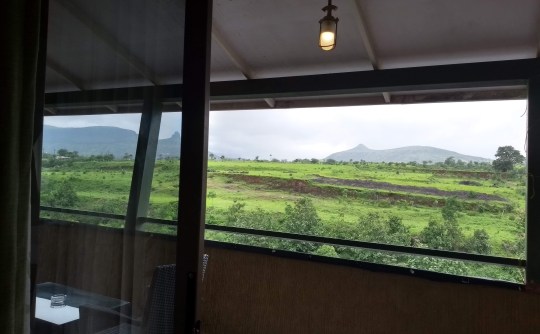
Nashik in Maharashtra is home to one of the 12 important Jyotirlingas which is Trimbakeshwar. It is an important city in Maharashtra after Mumbai and Pune. It has temples of great significance, lakes, vineyards, adventure laden forts, treks and many important rivers of India. Even a human being’s new journey to the other world begins from here once the ashes are poured in the Triveni Sangam(the confluence of Rivers Godavari, Varuni and Tharuni). It’s a complete city… Nashik.

Rain soaked Nashik
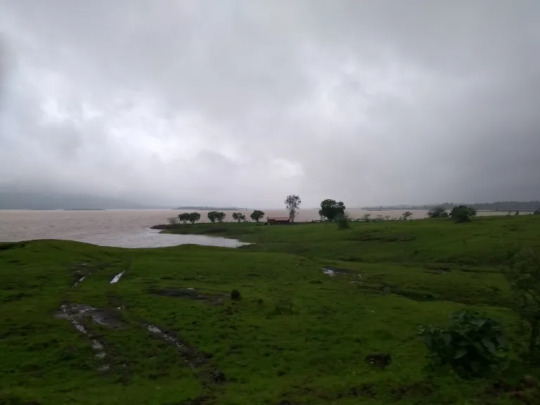
Godavari river which is the 2nd longest river in India after the Ganges flows through the heart of this city. It is also called Dakshin Ganga _ Ganga of the South. You must be wondering “Nashik is in the west of India and the river located there is called Dakshin Ganga.?” So, well, the length of Godavari river is 1500 kms and it has a large drainage basin which covers parts of Maharashtra, Madhya Pradesh, Orissa and Andhra Pradesh.
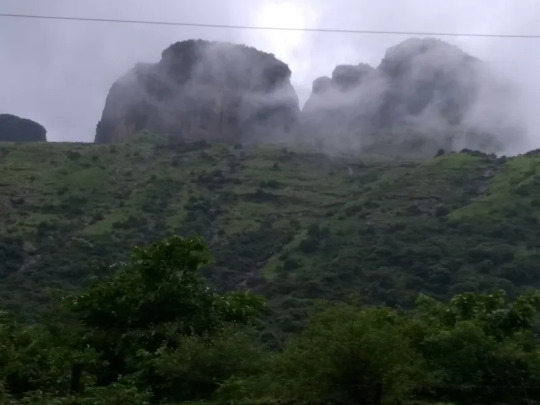
Nashik is a 5 hour drive from Mumbai and approximatley 166 kms. There is an inexhaustive list of place to be visited when one is in Nashik. The beauty of this place lies in the place itself and not the eyes of the beholder. Because everything that you see is Gold.
The road towards Nashik is a lovely drive with scenic views, ghats and climbs that take you to the cloud covered mountains.

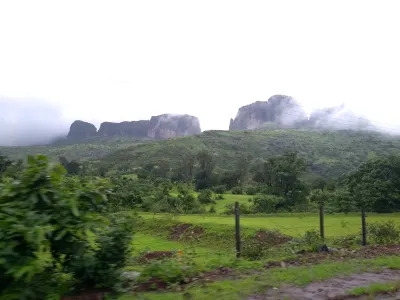
We undertook this trip to visit Trimbakeshwar – a swayambhu. Towering high in the skies behind the temple is the Brahmagiri hills from where the Godavari river rises and creates it’s large basin. One can undertake a trek to the Brahmagiri hill too to witness the springing of Godavari and get an eagle’s eye view from there. Trimbakeshwar is the only Jyotirlinga which is housed in a depression/located below the ground. For devotees a large mirror is hung on the wall above the jyotirlinga which reflects the image and they receive the blessings. After this, we sat in the temple area with a view of the jyotirlinga in front of us and the shanti took over us. Nothing could, now, disturb this peace in our minds ever.
The Anjaneri hill trek is another exciting journey upwards. The trek is easy but the monsoons can create slippery zones which need to be taken good care of. Atop the hill is the temple of Hanumanji who lends his name to the hill.
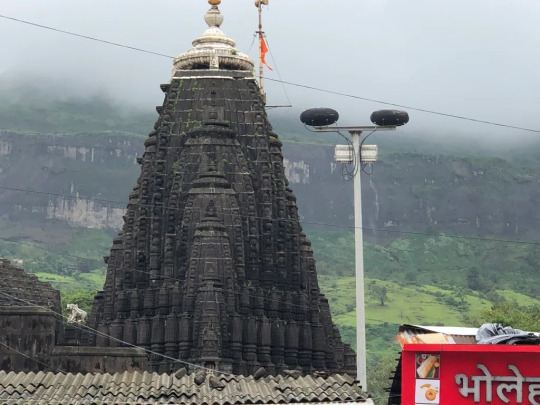
The vineyards are the landmark of Nashik. Most of the vineyards in India are in Nashik. The climate of Nashik is perfect for grapes cultivation and Nashik is called as the “Wine capital of India”. The Sula Vineyards are the primary source of wine here but there are many other wineries such as Soma, York, Vallonne, Renaissance and many others. The wine tasting ceremony is something that youngsters relish at these wineries. The wine tasting and tour of the vineyard is a paid tour where children are not allowed. We visited the York winery as the resort where we stayed had tied up with this one for providing their patrons with free tours to the Vineyard.

Nashik has abundant places of interest for new visitors and the old ones keep coming back for more!!
0 notes
Text
Kedarnath Tour
As of today, the 10th of May, 2024, the entrances to Kedarnath Dham are now open. Situated at an elevation of 3584 meters above sea level on the banks of the Mandakini River, the Kedarnath temple is considered by some to be one of the most important pilgrimage sites in Northern India. This place used to be known by the name "Kedar Khand". The Kedarnath temple in Uttarakhand is a part of the Char Dhams and the Panch Kedar, in addition to being one of Lord Shiva's 12 Jyotirlingas in India. Uttarakhand is the location of both of these temples.
For more information please visit our website: Trip Counselors.
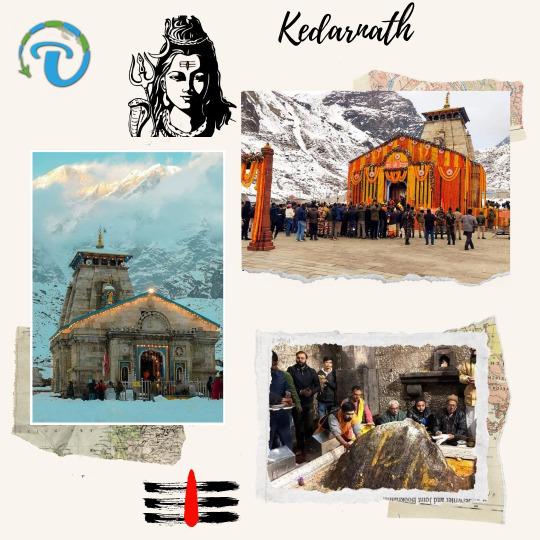
#kedarnath yatra#haridwar to kedarnath#kedarnath trip#trip kedarnath#kedar nath badrinath#kedarnath from rishikesh#kedarnath tour#tour kedarnath#kedarnath tour package#kedarnath travel package#trip counselors#trip planner#tour planner#travel plan#plan my trip#vacation planner#tour and travel#easy trip planners#couple tour#travel with friends#solo travel#itinerary planning
0 notes
Text
Guide For Trimbakeshwar Kalsarp Pooja Booking
According to astrology, Kaal Sarp Dosh is one of the most dangerous Doshas. A person is affected by this dosh in his/her horoscope when all the planets are located between the Rahu and Ketu planets. If left untreated, the malefic effects of this dosh can cause serious harm to the person.
Are you also facing a sudden rise/fall in your life? This affects the native's life in all aspects, such as relationships, business, career, education, marriage, etc. Well, then the best solution to get rid of this dosh is to perform Kaal Sarp Dosh Pooja. Wondering how to get it done? To help you, here is your Trimbakeshwar Kalsarp pooja booking online guide.
Why Kalsarp Pooja at Trimbakeshwar Only?
Wondering what makes Trimbakeshwar the best choice for Kalsarp puja? Situated in Trimbak, near Nashik, Maharashtra, Trimbakeshwar is an ancient temple. It is dedicated to Lord Shiva and holds high importance both spiritually and religiously. It also falls under the 12 Jyotirlingas in India and has 3 lingams. This Hindu temple is also the source of the Godavari River.
It is no surprise that it gets supreme power and importance overall. The pujas here are done by the best pandits, as they are highly knowledgeable and come with years of knowledge. When the Kalsarp puja is done here, it is said that effectiveness and efficiency are increased. For good results, this puja in the whole world is done here, as it is the best way to resolve the ill effects.
Duration of Kalsarp Dosh
Wondering how long Lalsarp dosh lasts? If a person is affected by this dosh in his/her kundli, it lasts for a long time. For instance:
When Rahu is in first place, it lasts up to 27 years.
When Rahu is in 6th place, it lasts up to 54 years.
The best thing one can do to minimise its effects is to perform Kalsarp dosh puja at Trimbakeshwar by experienced and authorised Purohits/Guruji/Pandits.
When to do Kalsarp Pooja at Trimbakeshwar?
Wondering which is the best month to perform Kalsarp pooja at Trimbakeshwar? The most important day is Amavasya or Naga Panchami. The best days are on Tuesday and Sunday. However, the date for this puja falls from 15th Jan to 15th July or from 15th July to 15th January; which is the time of the Uttarayanam and Dakshinayanam periods, respectively. For the best results and to completely get rid of the malefic and negative effects of this dosh, the pooja must be done twice a year.
How to Book Kalsarp Pooja at Trimbakeshwar Online?
Wondering how to get your puja done at Trimbakeshwar? Whether you want to do it in-person or online, here is the online procedure for Trimbakeshwar Kalsarp pooja booking:
The very first thing is to visit the official website.
There, you can contact the most experienced Guruji or Pandit who will be performing the puja.
Then scroll down and click on Book Now to book online.
The next step is to share your personal and genuine details, such as date of birth, time of birth, place of birth, selected puja, contact number, etc.
Once the Guruji or Pandit is done checking your Kundali, he will advise you on the type of dosh you have in your horoscope.
The pandit will suggest the best remedy according to the dosh found in your Kundali.
Next, the pandit will choose a specific Muhurat or date to perform the puja.
Finally, according to the date you're comfortable with, you can confirm your Trimbakeshwar Kalsarp Pooja booking online.
Can Kalsarp Pooja at Trimbakeshwar be Done Online?
Wondering what happens if a person is physically unfit or unable to perform Kalsarp puja at Trimbakeshwar in person? Well, don't worry; those who are physically unable can perform this puja from the comfort of their homes. Yes, all you need to do is book through the official website and let the pandit know about details and requirements.
The puja will be done on your behalf using your name and other genuine information. The best part is you can join your puja live at Trimbakeshwar virtually through online modes. Upon completion, some pandits also send Prasad and blessings to the address or location provided by you.
0 notes